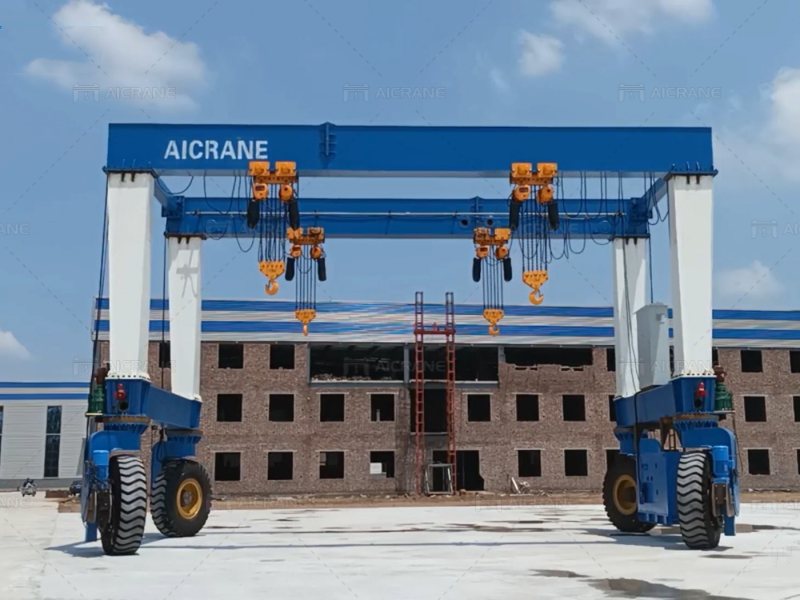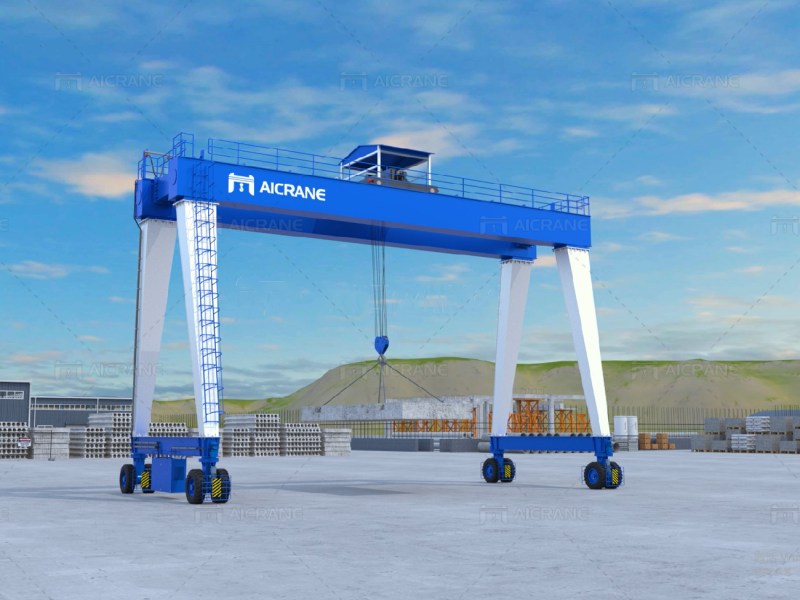In the fast-paced world of port and terminal operations, strategic partnerships with Rubber Tired Gantry (RTG) crane manufacturers play a vital role in maximizing efficiency, productivity, and sustainability. These partnerships go beyond conventional supplier relationships, fostering collaboration and innovation to address complex challenges faced by modern terminals. This article explores the significance of forming strategic alliances with RTG crane manufacturers and how such partnerships can optimize terminal operations for maximum efficiency and competitiveness.

Importance of Strategic Partnerships
Establishing strategic partnerships with RTG crane manufacturers offers numerous benefits that directly impact terminal operations:
Access to Cutting-Edge Technology: Collaborating with RTG crane manufacturers grants terminals access to the latest advancements in crane design, automation, and control systems. Manufacturers invest heavily in research and development (R&D) to enhance crane performance, safety features, and energy efficiency. By partnering with these innovators, terminals can deploy state-of-the-art equipment designed to optimize cargo handling processes.
Customized Solutions: RTG crane manufacturers understand that each terminal has unique operational requirements and challenges. Through strategic partnerships, manufacturers work closely with terminal operators to develop customized RTG crane configurations tailored to specific needs. This customization ensures optimal performance, seamless integration within the terminal environment, and maximum efficiency.
Continuous Support and Maintenance: Strategic partnerships often include comprehensive support packages, encompassing maintenance services, spare parts availability, and technical assistance. Manufacturers prioritize minimizing downtime and ensuring maximum uptime for RTG gantry cranes through proactive maintenance programs and responsive customer support.
Key Benefits of Partnering with RTG Crane Manufacturers
Enhanced Operational Efficiency: Modern RTG cranes equipped with advanced technologies streamline cargo handling processes, reduce turnaround times, and optimize yard space utilization. Features like automation, precise control systems, and intelligent positioning capabilities enhance overall operational efficiency, contributing to increased throughput and reduced operational costs.
Improved Safety Standards: RTG crane manufacturers prioritize safety by incorporating advanced safety features and automation capabilities into their crane designs. Terminal operators benefit from enhanced safety standards, minimized risk of accidents, and improved compliance with industry regulations.
Cost Optimization: Strategic partnerships can lead to cost-effective solutions, such as energy-efficient RTG models that reduce fuel consumption and operational expenses over time. Manufacturers work closely with terminals to implement sustainable practices and technologies that contribute to cost optimization and environmental stewardship.
Collaborative Innovation and Development
Joint Research and Development (R&D): Partnerships with RTG mobile gantry crane manufacturers facilitate collaborative R&D initiatives aimed at driving continuous innovation. By combining industry expertise and resources, terminals and manufacturers develop new technologies, solutions, and operational practices that address evolving market demands and industry trends.
Pilot Projects and Demonstrations: Manufacturers collaborate with terminal operators to conduct pilot projects or demonstrations of new technologies. These initiatives allow for real-world testing and validation of innovative solutions before full-scale implementation, minimizing risks and maximizing the effectiveness of technology adoption.

Best Practices for Establishing Partnerships
Successful partnerships with RTG crane manufacturers are built on the foundation of shared goals, open communication, and mutual trust:
Define Clear Objectives and Expectations: Align with RTG crane manufacturers on shared objectives, expectations, and deliverables to establish a mutually beneficial partnership. Clearly define key performance indicators (KPIs) and success metrics to measure the impact of collaboration.
Foster Open Communication Channels: Establish transparent communication channels to facilitate ongoing collaboration, feedback exchange, and problem-solving. Regular meetings, workshops, and site visits foster a culture of openness and collaboration between terminal operators and manufacturers.
Regular Performance Reviews: Conduct regular performance reviews and assessments to evaluate the effectiveness of the partnership. Monitor key metrics related to operational efficiency, safety performance, and cost optimization to identify areas for improvement or optimization.
Case Studies and Success Stories
Highlighting real-world examples of successful partnerships between terminal operators and RTG crane manufacturers and suppliers can provide valuable insights and inspiration:
- Case Study 1: Terminal X partners with Manufacturer A to implement automated RTG cranes, resulting in a 20% increase in throughput and a significant reduction in operational costs.
- Case Study 2: Manufacturer B collaborates with Terminal Y to develop customized RTG crane configurations, improving yard space utilization and minimizing congestion.
Conclusion
Strategic partnerships with RTG crane manufacturers offer terminal operators a pathway to unlocking operational excellence, efficiency, and innovation within port environments. By forging strong alliances based on shared objectives and continuous collaboration, terminals can leverage cutting-edge technologies and tailored solutions to maximize efficiency, enhance safety standards, and drive sustainable growth in the maritime industry. As the global trade landscape evolves, strategic partnerships will continue to play a pivotal role in shaping the future of port and terminal operations, empowering organizations to thrive in an increasingly competitive and dynamic market.